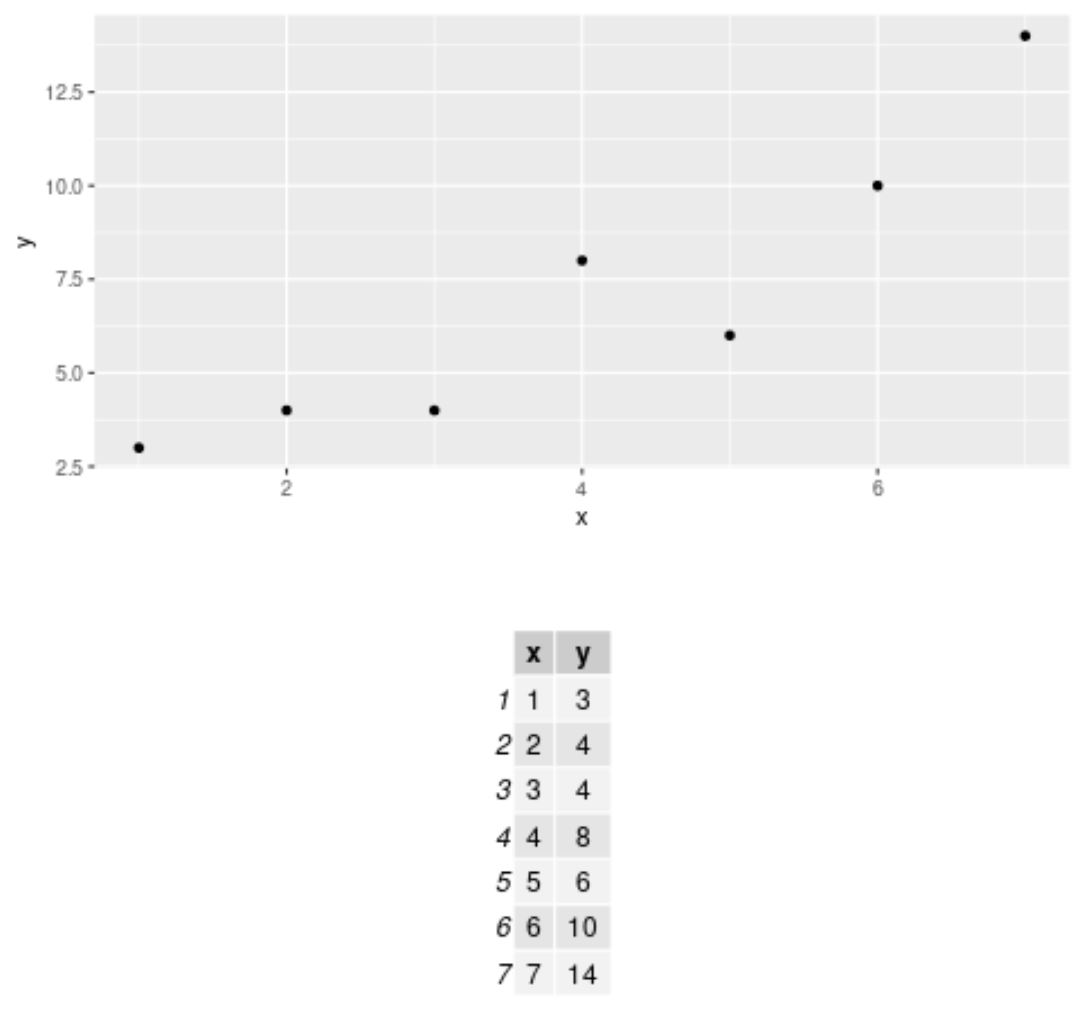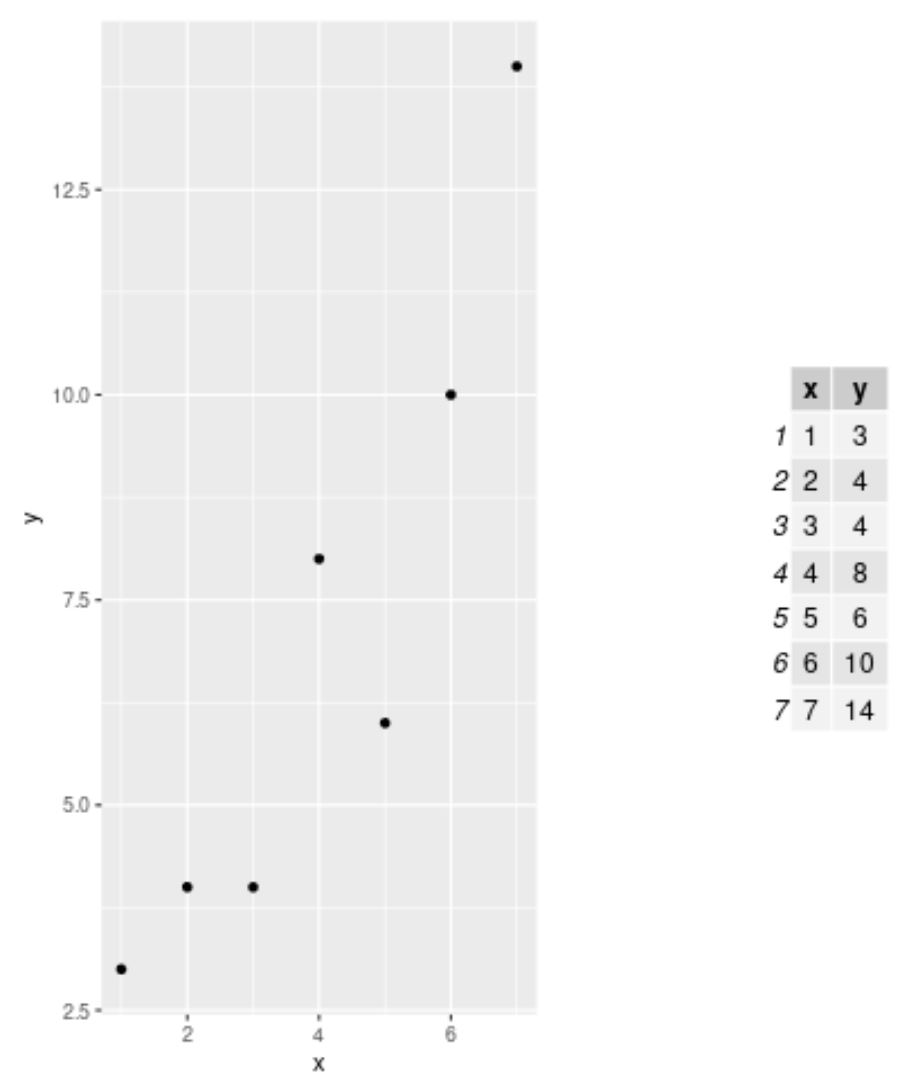如何在 r 中绘制表格(附示例)
通常,您可能想在 R 中绘制带有图形的表格。
幸运的是,使用gridExtra包中的函数可以轻松做到这一点。
以下示例展示了如何在实践中使用此包中的函数来绘制表格。
示例:在 R 中绘制表格
假设我们在 R 中有以下数据框:
#create data frame df <- data. frame (x=c(1, 2, 3, 4, 5, 6, 7), y=c(3, 4, 4, 8, 6, 10, 14)) #view data frame df xy 1 1 3 2 2 4 3 3 4 4 4 8 5 5 6 6 6 10 7 7 14
现在假设我们要创建一个散点图来可视化数据框中的值,并绘制一个显示原始值的表格。
我们可以使用以下语法来做到这一点:
library (gridExtra)
library (ggplot2)
#define scatterplot
my_plot <- ggplot(df, aes(x=x, y=y)) +
geom_point()
#define table
my_table <- tableGrob(df)
#create scatterplot and add table underneath it
grid. arrange (my_plot, my_table)

以下是这段代码的工作原理:
- 我们使用ggplot()来生成点云
- 我们使用tableGrob()将数据框转换为表对象
- 我们使用grid.arrange()来绘制散点图和数组。
默认情况下, grid.arrange()函数将散点图和表格排列在同一列中。
但是,您可以使用ncol参数以两列(即并排)方式显示散点图和表格:
library (gridExtra)
library (ggplot2)
#define scatterplot
my_plot <- ggplot(df, aes(x=x, y=y)) +
geom_point()
#define table
my_table <- tableGrob(df)
#create scatterplot and add table next to it
grid. arrange (arrangeGrob(my_plot, my_table, ncol= 2 ))

该表现在显示在图的一侧而不是下方。
注意:在本例中,我们只绘制了一张表格,但您可以在grid.arrange()函数中指定多个表格来一次绘制多个表格。
其他资源
以下教程解释了如何在 R 中执行其他常见任务: